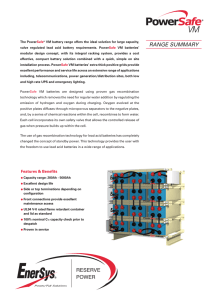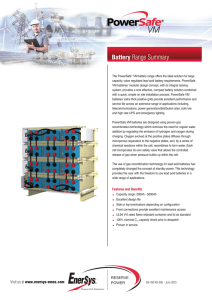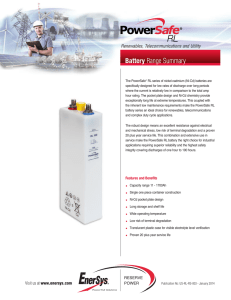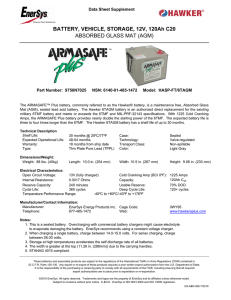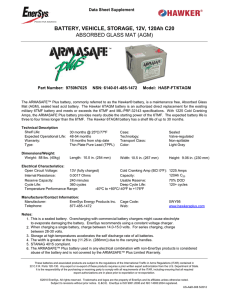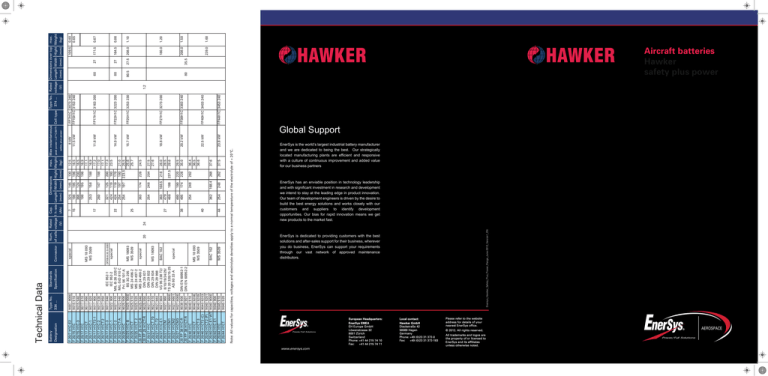
9007 9000
9015 910
9015 940
9017 910
9017 960
9017 920
9017 900
9017 930
9017 950
9017 940
9022 900
9021 910
9022 940
9025 900
9025 9000
9025 910
9025 920
9025 940
9025 950
9027 920
9027 910
9027 940
9027 900
9027 960
9027 9600
9027 9601
9027 8000
9038 900
9038 901
9040 910
9040 9206
9040 9209
9040 9203
9040 9201
9040 9000
9040 900
9045 910
9045 920
F 20/7 H1C-E2
F 20/15 H1C
F 20/15 H1C-3
F 20/17 H1C
F 20/17 H1CT
F 20/17 H1C-1
F 20/17 H1CT2-1
F 20/17 H1C-2
F 20/17 H1CT-2
F 20/17 H1C-3
F 20/22 H1C-1
F 20/22 H1C-2
F 20/22 H1CT-A
F 20/25 H1C
F 20/25 H1C-B
F 20/25 H1CT
F 20/25 H1CT 2
20 FP 25 H1C-R
20 FP 25 H1CT-R
F 20/27 H1C
F 20/27 H1CT 70
F 20/27 H1C-T2
F 20/27 H1C-E1
F 20/27 H1CM
F 20/27 H1CM1
F 20/27 H1CM2
F 20/27 H1CM3
20 FP 38 H1C-R
20 FP 38 H1CT-R
F 20/40 H1C
F 20/40 H1CT
F 20/40 H1CT-3
F 20/40 H1CT2 (C)
F 20/40 H1CT2 (P)
F 20/40 H1C-E1 WT
F 20/40 H1C-E1
F 20/44 H1C
F 20/44 H1CT
DIN EN 60952-1
DIN EN 60952-2
IEC 952-1
IEC 952-2
MIL-B-26 220 C
MIL-StD 810 C
Prl. 56 101 A
BS 3G 205
MS 24 496-2
MS 24 497-2
MS 24 498-2
DIN 29 831
DIN 29 832
DIN 29 834
DIN 29 998
VG 95 238 T2/
8/10/19/24/29/
TS 20 320/15-25
AS 80 33 A
Standards
Specification
MS 3509
BAC 102
MS 18 093
MS 3509
special
BAC 102
MS 18093
special
MS 18093
MS 3509
special
DPXB-8-33 S-0301
MS 18 093
MS 3509
special
Connector
20
24
44
40
38
27
25
22
17
7
15
186
190
174
248
480
495
254
254
248
168.4
168.5
363
479
466
362
248
254
174
125
119
119
197
197
321
424
424
254
254
363
147
158
253
260
145
195
124
195
325
198
368
198
24.5
27.5
27.6
28.0
28.5
28.6
29.5
35.0
36.4
36.5
36.6
37.6
37.5
204
218
237.5
220
226
262
268
262
21.0
25.5
25.6
25.7
12.5
16.5
16.5
16.9
17.1
16.9
17.2
17.0
17.1
17.3
23.5
226
200
180
170
180
223.5
188
188
130
196
200
196
EnerSys is dedicated to providing customers with the best
solutions and after-sales support for their business, wherever
you do business, EnerSys can support your requirements
through our vast network of approved maintenance
distributors.
European Headquarters:
EnerSys EMEA
EH Europe GmbH
Löwenstrasse 32
8001 Zürich
Switzerland
Phone: +41 44 215 74 10
Fax:
+41 44 215 74 11
www.enersys.com
Enersys_Hawker_Safety_Plus_Power_Range_June-2012_Version1_EN
23.8 kW
22.5 kW
20.2 kW
18.8 kW
15.7 kW
14.0 kW
11.8 kW
8 kW
11.5 kW
FP44H1C 3453 240
FP40H1C 3403 240
239.0
208.0
FP38H1C 3383 240
35.5
180.0
80
27.5 208.0
FP27H1C 3273 200
1.2
80.5
FP25H1C 3253 230
164.5
80
FP22H1C 3223 200
27
171.5
60
FP17H1C 3163 200
27
109.5
FP7H1C 3073 240
FP15H1C 3153 240
1.60
1.50
1.20
1.10
0.86
0.67
0.40
0.65
Num. Rated
Cap.
Dimensions
max. Max instantaneous
Type No. Rated Dimensions over top max.
of cells voltage 1 h rate Length Width Hight Weight peak power (+27°C/80°F) Cell type 374 ... voltage Length Width Hight Weight
(V)
(Ah)
(mm) (mm) (mm) (kg)
(V)
(mm) (mm) (mm) (kg)
safety plus power
Note: All values for capacities, voltages and electrolyte densities apply to a normal temperature of the electrolyte of + 20 °C.
Type No.
334 ...
Battery
Designation
Technical Data
Aircraft batteries
Hawker
safety plus power
Global Support
EnerSys is the world’s largest industrial battery manufacturer
and we are dedicated to being the best. Our strategically
located manufacturing plants are efficient and responsive
with a culture of continuous improvement and added value
for our business partners
EnerSys has an enviable position in technology leadership
and with significant investment in research and development
we intend to stay at the leading edge in product innovation.
Our team of development engineers is driven by the desire to
build the best energy solutions and works closely with our
customers and suppliers to identify development
opportunities. Our bias for rapid innovation means we get
new products to the market fast.
Local contact:
Hawker GmbH
Dieckstraße 42
58089 Hagen
Germany
Phone: +49 (0)23 31 372-0
Fax:
+49 (0)23 31 372-183
Please refer to the website
address for details of your
nearest EnerSys office.
© 2012. All rights reserved.
All trademarks and logos are
the property of or licensed to
EnerSys and its affiliates
unless otherwise noted.
AEROSPACE
Technology for maximum
safety and power
Aircraft batteries for
every application
The Battery
The Construction
manufacturing
Hawker safety
plus power
THE WORLD IS BECOMING
SMALLER. AIRCRAFT TRAVEL
THOUSANDS OF KILOMETRES IN A
MATTER OF HOURS. AIR ROUTES
CONNECT ENTIRE CONTINENTS. A
The cell is the basic component of the
nickel cadmium battery, as with other
accumulators, and consists of positive
and negative electrodes, with a sinter
plate design, separators, electrolyte,
cell container and a vent.
Sintered metal, made using nickel
powder with a porosity of around 80%,
acts as a carrier for the active mass in
the negative and positive electrodes.
This structure is stiffened by inserting a
perforated nickel plate. The active
material is introduced into the highly
porous composite carrier in a liquid
state, with the positive electrodes
immersed in a nickel salt solution and
the negative electrodes immersed in a
cadmium salt solution.
FAILURE IN THE AIRBORNE ENERGY
SUPPLY SYSTEM CAN RESULT IN
CATASTROPHE. IT IS VITAL THAT
ALL INSTRUMENTS ARE IN
Extremely thin separators segregate
the positive and negative electrodes.
Each separator incorporates a ‘gas
barrier’ which is very temperature-
Expertise you can
depend on
The battery typically consists of 20
cells housed inside a battery case. All
hardware, including the container and
cover, is made from stainless steel
while the interior of the battery
container is lined with heat resistant
plastic. Soft rubber, which acts as a
retainer for the cells, lines the cover
and high conductivity nickel plated
copper connectors are used for
resistant, preventing thermal damage
to the cell even at high ambient
temperatures or excessive charging
voltages (known as thermal run-away).
The positive and negative electrodes
are combined, with alternate layers of
separators, into a plate block containing the appropriate terminals. The plate
block is then inserted into a cell
container and cover formed from heat
resistant plastic (Polyamide). Finally,
the container and cover are welded
together using a special process to
form a sealed unit.
As an added safety measure, each cell
is fitted with a special vent to ensure
that the gases produced during charging can escape before excessive
pressure builds as well as prevent the
leakage of electrolyte should the
battery be inverted.
The Expertise
The Design
1. Negative electrode
2. Positive electrode
3. Separator
4. Plate block
5. Negative pole bolt
6. Positive pole bolt
7. Electrolyte level indicator
8. Baffle
9. Pole bolt sealing ring
inter-cell
connections.
Tubes
attached to the battery’s side allow
venting to take place, and a plug
mounted on the front of the battery
container connects it to the aircraft’s
electrical system. In addition, all
batteries
may
be
fitted
with
temperature sensors for thermal
monitoring.
Hawker
has
a
reputation
for
unbeatable experience and unrivalled
expertise in the manufacture of aircraft
batteries. Hawker batteries ensure the
utmost reliability for both commercial
aircrafts and military fighter jets.
Hawker safety plus power is the result
of many years’ research into creating a
battery that delivers a perfect power
supply to all monitoring and control
instruments; one that can be relied
upon to operate at optimum capacity
even under extreme conditions.
The materials used in Hawker batteries
are subject to stringent laboratory
tests, and every stage of the
manufacturing process meets the
criteria set out in the ISO 9001 quality
standard. Finally, the Hawker nickel
cadmium aircraft batteries comply
with the highest requirements of
airworthiness as set out by EASA /
FAA / AR IAC / OEMs and Ministry of
Defence.
The Advantages
10. Cell cover
11. Sealing ring
12. Vent
13. Nut
14. Spring washer
15. Nut
16. Limiting cap
17. Pole bolt sealing ring
18. Cell container
• Low internal resistance allows a high current discharge,
giving excellent power output for Auxiliary Power Unit
(APU) operating in temperatures between -30°C and
+70°C.
• High capacity at low temperatures and rapid recharge
with constant voltage to 100% capacity ensures
exceptional reliability even in emergency conditions.
• Initial high current and a constant voltage supply,
CONSTANT OPERATIONAL
resulting from Hawker’s exclusive technology of thin
electrodes with a very low internal resistance, delivers
optimum charge during flight.
READINESS
• The specially designed separator material remains
stable even in high temperatures, ensuring a high level
of safety and producing no ‘thermal run-away’.
(Overcharging tests [28,5 V / 50 °C / 500h] show no
defects to the separator material as well as to the
complete cells.)
• Optimum storage conditions of +10°C to +35°C and
45% to 75% humidity facilitate a long life expectancy.
• The cell design, with its high electrolyte content, gives
rise to very low levels of self-discharge.
• Low water consumption, a plentiful supply of electrolyte
and no decrease in useable capacity results in longer
periods without maintenance.
AEROSPACE
Technology for maximum
safety and power
Aircraft batteries for
every application
The Battery
The Construction
manufacturing
Hawker safety
plus power
THE WORLD IS BECOMING
SMALLER. AIRCRAFT TRAVEL
THOUSANDS OF KILOMETRES IN A
MATTER OF HOURS. AIR ROUTES
CONNECT ENTIRE CONTINENTS. A
The cell is the basic component of the
nickel cadmium battery, as with other
accumulators, and consists of positive
and negative electrodes, with a sinter
plate design, separators, electrolyte,
cell container and a vent.
Sintered metal, made using nickel
powder with a porosity of around 80%,
acts as a carrier for the active mass in
the negative and positive electrodes.
This structure is stiffened by inserting a
perforated nickel plate. The active
material is introduced into the highly
porous composite carrier in a liquid
state, with the positive electrodes
immersed in a nickel salt solution and
the negative electrodes immersed in a
cadmium salt solution.
FAILURE IN THE AIRBORNE ENERGY
SUPPLY SYSTEM CAN RESULT IN
CATASTROPHE. IT IS VITAL THAT
ALL INSTRUMENTS ARE IN
Extremely thin separators segregate
the positive and negative electrodes.
Each separator incorporates a ‘gas
barrier’ which is very temperature-
Expertise you can
depend on
The battery typically consists of 20
cells housed inside a battery case. All
hardware, including the container and
cover, is made from stainless steel
while the interior of the battery
container is lined with heat resistant
plastic. Soft rubber, which acts as a
retainer for the cells, lines the cover
and high conductivity nickel plated
copper connectors are used for
resistant, preventing thermal damage
to the cell even at high ambient
temperatures or excessive charging
voltages (known as thermal run-away).
The positive and negative electrodes
are combined, with alternate layers of
separators, into a plate block containing the appropriate terminals. The plate
block is then inserted into a cell
container and cover formed from heat
resistant plastic (Polyamide). Finally,
the container and cover are welded
together using a special process to
form a sealed unit.
As an added safety measure, each cell
is fitted with a special vent to ensure
that the gases produced during charging can escape before excessive
pressure builds as well as prevent the
leakage of electrolyte should the
battery be inverted.
The Expertise
The Design
1. Negative electrode
2. Positive electrode
3. Separator
4. Plate block
5. Negative pole bolt
6. Positive pole bolt
7. Electrolyte level indicator
8. Baffle
9. Pole bolt sealing ring
inter-cell
connections.
Tubes
attached to the battery’s side allow
venting to take place, and a plug
mounted on the front of the battery
container connects it to the aircraft’s
electrical system. In addition, all
batteries
may
be
fitted
with
temperature sensors for thermal
monitoring.
Hawker
has
a
reputation
for
unbeatable experience and unrivalled
expertise in the manufacture of aircraft
batteries. Hawker batteries ensure the
utmost reliability for both commercial
aircrafts and military fighter jets.
Hawker safety plus power is the result
of many years’ research into creating a
battery that delivers a perfect power
supply to all monitoring and control
instruments; one that can be relied
upon to operate at optimum capacity
even under extreme conditions.
The materials used in Hawker batteries
are subject to stringent laboratory
tests, and every stage of the
manufacturing process meets the
criteria set out in the ISO 9001 quality
standard. Finally, the Hawker nickel
cadmium aircraft batteries comply
with the highest requirements of
airworthiness as set out by EASA /
FAA / AR IAC / OEMs and Ministry of
Defence.
The Advantages
10. Cell cover
11. Sealing ring
12. Vent
13. Nut
14. Spring washer
15. Nut
16. Limiting cap
17. Pole bolt sealing ring
18. Cell container
• Low internal resistance allows a high current discharge,
giving excellent power output for Auxiliary Power Unit
(APU) operating in temperatures between -30°C and
+70°C.
• High capacity at low temperatures and rapid recharge
with constant voltage to 100% capacity ensures
exceptional reliability even in emergency conditions.
• Initial high current and a constant voltage supply,
CONSTANT OPERATIONAL
resulting from Hawker’s exclusive technology of thin
electrodes with a very low internal resistance, delivers
optimum charge during flight.
READINESS
• The specially designed separator material remains
stable even in high temperatures, ensuring a high level
of safety and producing no ‘thermal run-away’.
(Overcharging tests [28,5 V / 50 °C / 500h] show no
defects to the separator material as well as to the
complete cells.)
• Optimum storage conditions of +10°C to +35°C and
45% to 75% humidity facilitate a long life expectancy.
• The cell design, with its high electrolyte content, gives
rise to very low levels of self-discharge.
• Low water consumption, a plentiful supply of electrolyte
and no decrease in useable capacity results in longer
periods without maintenance.
AEROSPACE
Technology for maximum
safety and power
Aircraft batteries for
every application
The Battery
The Construction
manufacturing
Hawker safety
plus power
THE WORLD IS BECOMING
SMALLER. AIRCRAFT TRAVEL
THOUSANDS OF KILOMETRES IN A
MATTER OF HOURS. AIR ROUTES
CONNECT ENTIRE CONTINENTS. A
The cell is the basic component of the
nickel cadmium battery, as with other
accumulators, and consists of positive
and negative electrodes, with a sinter
plate design, separators, electrolyte,
cell container and a vent.
Sintered metal, made using nickel
powder with a porosity of around 80%,
acts as a carrier for the active mass in
the negative and positive electrodes.
This structure is stiffened by inserting a
perforated nickel plate. The active
material is introduced into the highly
porous composite carrier in a liquid
state, with the positive electrodes
immersed in a nickel salt solution and
the negative electrodes immersed in a
cadmium salt solution.
FAILURE IN THE AIRBORNE ENERGY
SUPPLY SYSTEM CAN RESULT IN
CATASTROPHE. IT IS VITAL THAT
ALL INSTRUMENTS ARE IN
Extremely thin separators segregate
the positive and negative electrodes.
Each separator incorporates a ‘gas
barrier’ which is very temperature-
Expertise you can
depend on
The battery typically consists of 20
cells housed inside a battery case. All
hardware, including the container and
cover, is made from stainless steel
while the interior of the battery
container is lined with heat resistant
plastic. Soft rubber, which acts as a
retainer for the cells, lines the cover
and high conductivity nickel plated
copper connectors are used for
resistant, preventing thermal damage
to the cell even at high ambient
temperatures or excessive charging
voltages (known as thermal run-away).
The positive and negative electrodes
are combined, with alternate layers of
separators, into a plate block containing the appropriate terminals. The plate
block is then inserted into a cell
container and cover formed from heat
resistant plastic (Polyamide). Finally,
the container and cover are welded
together using a special process to
form a sealed unit.
As an added safety measure, each cell
is fitted with a special vent to ensure
that the gases produced during charging can escape before excessive
pressure builds as well as prevent the
leakage of electrolyte should the
battery be inverted.
The Expertise
The Design
1. Negative electrode
2. Positive electrode
3. Separator
4. Plate block
5. Negative pole bolt
6. Positive pole bolt
7. Electrolyte level indicator
8. Baffle
9. Pole bolt sealing ring
inter-cell
connections.
Tubes
attached to the battery’s side allow
venting to take place, and a plug
mounted on the front of the battery
container connects it to the aircraft’s
electrical system. In addition, all
batteries
may
be
fitted
with
temperature sensors for thermal
monitoring.
Hawker
has
a
reputation
for
unbeatable experience and unrivalled
expertise in the manufacture of aircraft
batteries. Hawker batteries ensure the
utmost reliability for both commercial
aircrafts and military fighter jets.
Hawker safety plus power is the result
of many years’ research into creating a
battery that delivers a perfect power
supply to all monitoring and control
instruments; one that can be relied
upon to operate at optimum capacity
even under extreme conditions.
The materials used in Hawker batteries
are subject to stringent laboratory
tests, and every stage of the
manufacturing process meets the
criteria set out in the ISO 9001 quality
standard. Finally, the Hawker nickel
cadmium aircraft batteries comply
with the highest requirements of
airworthiness as set out by EASA /
FAA / AR IAC / OEMs and Ministry of
Defence.
The Advantages
10. Cell cover
11. Sealing ring
12. Vent
13. Nut
14. Spring washer
15. Nut
16. Limiting cap
17. Pole bolt sealing ring
18. Cell container
• Low internal resistance allows a high current discharge,
giving excellent power output for Auxiliary Power Unit
(APU) operating in temperatures between -30°C and
+70°C.
• High capacity at low temperatures and rapid recharge
with constant voltage to 100% capacity ensures
exceptional reliability even in emergency conditions.
• Initial high current and a constant voltage supply,
CONSTANT OPERATIONAL
resulting from Hawker’s exclusive technology of thin
electrodes with a very low internal resistance, delivers
optimum charge during flight.
READINESS
• The specially designed separator material remains
stable even in high temperatures, ensuring a high level
of safety and producing no ‘thermal run-away’.
(Overcharging tests [28,5 V / 50 °C / 500h] show no
defects to the separator material as well as to the
complete cells.)
• Optimum storage conditions of +10°C to +35°C and
45% to 75% humidity facilitate a long life expectancy.
• The cell design, with its high electrolyte content, gives
rise to very low levels of self-discharge.
• Low water consumption, a plentiful supply of electrolyte
and no decrease in useable capacity results in longer
periods without maintenance.
AEROSPACE
9007 9000
9015 910
9015 940
9017 910
9017 960
9017 920
9017 900
9017 930
9017 950
9017 940
9022 900
9021 910
9022 940
9025 900
9025 9000
9025 910
9025 920
9025 940
9025 950
9027 920
9027 910
9027 940
9027 900
9027 960
9027 9600
9027 9601
9027 8000
9038 900
9038 901
9040 910
9040 9206
9040 9209
9040 9203
9040 9201
9040 9000
9040 900
9045 910
9045 920
F 20/7 H1C-E2
F 20/15 H1C
F 20/15 H1C-3
F 20/17 H1C
F 20/17 H1CT
F 20/17 H1C-1
F 20/17 H1CT2-1
F 20/17 H1C-2
F 20/17 H1CT-2
F 20/17 H1C-3
F 20/22 H1C-1
F 20/22 H1C-2
F 20/22 H1CT-A
F 20/25 H1C
F 20/25 H1C-B
F 20/25 H1CT
F 20/25 H1CT 2
20 FP 25 H1C-R
20 FP 25 H1CT-R
F 20/27 H1C
F 20/27 H1CT 70
F 20/27 H1C-T2
F 20/27 H1C-E1
F 20/27 H1CM
F 20/27 H1CM1
F 20/27 H1CM2
F 20/27 H1CM3
20 FP 38 H1C-R
20 FP 38 H1CT-R
F 20/40 H1C
F 20/40 H1CT
F 20/40 H1CT-3
F 20/40 H1CT2 (C)
F 20/40 H1CT2 (P)
F 20/40 H1C-E1 WT
F 20/40 H1C-E1
F 20/44 H1C
F 20/44 H1CT
DIN EN 60952-1
DIN EN 60952-2
IEC 952-1
IEC 952-2
MIL-B-26 220 C
MIL-StD 810 C
Prl. 56 101 A
BS 3G 205
MS 24 496-2
MS 24 497-2
MS 24 498-2
DIN 29 831
DIN 29 832
DIN 29 834
DIN 29 998
VG 95 238 T2/
8/10/19/24/29/
TS 20 320/15-25
AS 80 33 A
Standards
Specification
MS 3509
BAC 102
MS 18 093
MS 3509
special
BAC 102
MS 18093
special
MS 18093
MS 3509
special
DPXB-8-33 S-0301
MS 18 093
MS 3509
special
Connector
20
24
44
40
38
27
25
22
17
7
15
186
190
174
248
480
495
254
254
248
168.4
168.5
363
479
466
362
248
254
174
125
119
119
197
197
321
424
424
254
254
363
147
158
253
260
145
195
124
195
325
198
368
198
24.5
27.5
27.6
28.0
28.5
28.6
29.5
35.0
36.4
36.5
36.6
37.6
37.5
204
218
237.5
220
226
262
268
262
21.0
25.5
25.6
25.7
12.5
16.5
16.5
16.9
17.1
16.9
17.2
17.0
17.1
17.3
23.5
226
200
180
170
180
223.5
188
188
130
196
200
196
EnerSys is dedicated to providing customers with the best
solutions and after-sales support for their business, wherever
you do business, EnerSys can support your requirements
through our vast network of approved maintenance
distributors.
European Headquarters:
EnerSys EMEA
EH Europe GmbH
Löwenstrasse 32
8001 Zürich
Switzerland
Phone: +41 44 215 74 10
Fax:
+41 44 215 74 11
www.enersys.com
Enersys_Hawker_Safety_Plus_Power_Range_June-2012_Version1_EN
208.0
FP38H1C 3383 240
FP40H1C 3403 240
FP44H1C 3453 240
20.2 kW
22.5 kW
23.8 kW
80
180.0
FP27H1C 3273 200
18.8 kW
1.2
80.5
FP25H1C 3253 230
15.7 kW
35.5
239.0
27.5 208.0
164.5
80
FP22H1C 3223 200
14.0 kW
27
171.5
60
FP17H1C 3163 200
11.8 kW
27
109.5
FP7H1C 3073 240
FP15H1C 3153 240
8 kW
11.5 kW
1.60
1.50
1.20
1.10
0.86
0.67
0.40
0.65
Num. Rated
Cap.
Dimensions
max. Max instantaneous
Type No. Rated Dimensions over top max.
of cells voltage 1 h rate Length Width Hight Weight peak power (+27°C/80°F) Cell type 374 ... voltage Length Width Hight Weight
(V)
(Ah)
(mm) (mm) (mm) (kg)
(V)
(mm) (mm) (mm) (kg)
safety plus power
Note: All values for capacities, voltages and electrolyte densities apply to a normal temperature of the electrolyte of + 20 °C.
Type No.
334 ...
Battery
Designation
Technical Data
Aircraft batteries
Hawker
safety plus power
Global Support
EnerSys is the world’s largest industrial battery manufacturer
and we are dedicated to being the best. Our strategically
located manufacturing plants are efficient and responsive
with a culture of continuous improvement and added value
for our business partners
EnerSys has an enviable position in technology leadership
and with significant investment in research and development
we intend to stay at the leading edge in product innovation.
Our team of development engineers is driven by the desire to
build the best energy solutions and works closely with our
customers and suppliers to identify development
opportunities. Our bias for rapid innovation means we get
new products to the market fast.
Local contact:
Hawker GmbH
Dieckstraße 42
58089 Hagen
Germany
Phone: +49 (0)23 31 372-0
Fax:
+49 (0)23 31 372-183
Please refer to the website
address for details of your
nearest EnerSys office.
© 2012. All rights reserved.
All trademarks and logos are
the property of or licensed to
EnerSys and its affiliates
unless otherwise noted.
AEROSPACE
9007 9000
9015 910
9015 940
9017 910
9017 960
9017 920
9017 900
9017 930
9017 950
9017 940
9022 900
9021 910
9022 940
9025 900
9025 9000
9025 910
9025 920
9025 940
9025 950
9027 920
9027 910
9027 940
9027 900
9027 960
9027 9600
9027 9601
9027 8000
9038 900
9038 901
9040 910
9040 9206
9040 9209
9040 9203
9040 9201
9040 9000
9040 900
9045 910
9045 920
F 20/7 H1C-E2
F 20/15 H1C
F 20/15 H1C-3
F 20/17 H1C
F 20/17 H1CT
F 20/17 H1C-1
F 20/17 H1CT2-1
F 20/17 H1C-2
F 20/17 H1CT-2
F 20/17 H1C-3
F 20/22 H1C-1
F 20/22 H1C-2
F 20/22 H1CT-A
F 20/25 H1C
F 20/25 H1C-B
F 20/25 H1CT
F 20/25 H1CT 2
20 FP 25 H1C-R
20 FP 25 H1CT-R
F 20/27 H1C
F 20/27 H1CT 70
F 20/27 H1C-T2
F 20/27 H1C-E1
F 20/27 H1CM
F 20/27 H1CM1
F 20/27 H1CM2
F 20/27 H1CM3
20 FP 38 H1C-R
20 FP 38 H1CT-R
F 20/40 H1C
F 20/40 H1CT
F 20/40 H1CT-3
F 20/40 H1CT2 (C)
F 20/40 H1CT2 (P)
F 20/40 H1C-E1 WT
F 20/40 H1C-E1
F 20/44 H1C
F 20/44 H1CT
DIN EN 60952-1
DIN EN 60952-2
IEC 952-1
IEC 952-2
MIL-B-26 220 C
MIL-StD 810 C
Prl. 56 101 A
BS 3G 205
MS 24 496-2
MS 24 497-2
MS 24 498-2
DIN 29 831
DIN 29 832
DIN 29 834
DIN 29 998
VG 95 238 T2/
8/10/19/24/29/
TS 20 320/15-25
AS 80 33 A
Standards
Specification
MS 3509
BAC 102
MS 18 093
MS 3509
special
BAC 102
MS 18093
special
MS 18093
MS 3509
special
DPXB-8-33 S-0301
MS 18 093
MS 3509
special
Connector
20
24
44
40
38
27
25
22
17
7
15
186
190
174
248
480
495
254
254
248
168.4
168.5
363
479
466
362
248
254
174
125
119
119
197
197
321
424
424
254
254
363
147
158
253
260
145
195
124
195
325
198
368
198
24.5
27.5
27.6
28.0
28.5
28.6
29.5
35.0
36.4
36.5
36.6
37.6
37.5
204
218
237.5
220
226
262
268
262
21.0
25.5
25.6
25.7
12.5
16.5
16.5
16.9
17.1
16.9
17.2
17.0
17.1
17.3
23.5
226
200
180
170
180
223.5
188
188
130
196
200
196
EnerSys is dedicated to providing customers with the best
solutions and after-sales support for their business, wherever
you do business, EnerSys can support your requirements
through our vast network of approved maintenance
distributors.
European Headquarters:
EnerSys EMEA
EH Europe GmbH
Löwenstrasse 32
8001 Zürich
Switzerland
Phone: +41 44 215 74 10
Fax:
+41 44 215 74 11
www.enersys.com
Enersys_Hawker_Safety_Plus_Power_Range_June-2012_Version1_EN
208.0
FP38H1C 3383 240
FP40H1C 3403 240
FP44H1C 3453 240
20.2 kW
22.5 kW
23.8 kW
80
180.0
FP27H1C 3273 200
18.8 kW
1.2
80.5
FP25H1C 3253 230
15.7 kW
35.5
239.0
27.5 208.0
164.5
80
FP22H1C 3223 200
14.0 kW
27
171.5
60
FP17H1C 3163 200
11.8 kW
27
109.5
FP7H1C 3073 240
FP15H1C 3153 240
8 kW
11.5 kW
1.60
1.50
1.20
1.10
0.86
0.67
0.40
0.65
Num. Rated
Cap.
Dimensions
max. Max instantaneous
Type No. Rated Dimensions over top max.
of cells voltage 1 h rate Length Width Hight Weight peak power (+27°C/80°F) Cell type 374 ... voltage Length Width Hight Weight
(V)
(Ah)
(mm) (mm) (mm) (kg)
(V)
(mm) (mm) (mm) (kg)
safety plus power
Note: All values for capacities, voltages and electrolyte densities apply to a normal temperature of the electrolyte of + 20 °C.
Type No.
334 ...
Battery
Designation
Technical Data
Aircraft batteries
Hawker
safety plus power
Global Support
EnerSys is the world’s largest industrial battery manufacturer
and we are dedicated to being the best. Our strategically
located manufacturing plants are efficient and responsive
with a culture of continuous improvement and added value
for our business partners
EnerSys has an enviable position in technology leadership
and with significant investment in research and development
we intend to stay at the leading edge in product innovation.
Our team of development engineers is driven by the desire to
build the best energy solutions and works closely with our
customers and suppliers to identify development
opportunities. Our bias for rapid innovation means we get
new products to the market fast.
Local contact:
Hawker GmbH
Dieckstraße 42
58089 Hagen
Germany
Phone: +49 (0)23 31 372-0
Fax:
+49 (0)23 31 372-183
Please refer to the website
address for details of your
nearest EnerSys office.
© 2012. All rights reserved.
All trademarks and logos are
the property of or licensed to
EnerSys and its affiliates
unless otherwise noted.
AEROSPACE

